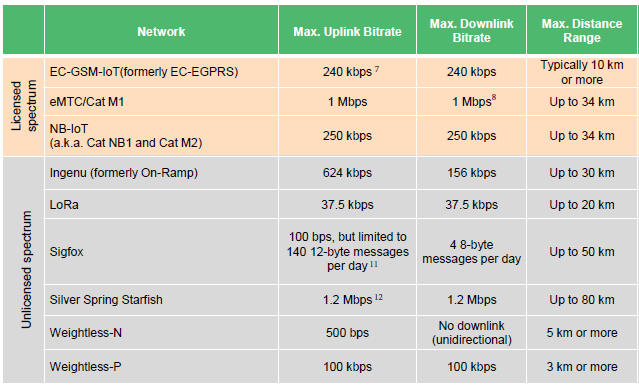IoT & Embedded Technology Blog
LoRaWAN Assumes LPWAN Leadership for IoT Gateways
The IoT is fueling wireless connectivity innovation and driving ecosystem development of new technologies such as low-power wide-area networks (LPWANs). LPWANs are suited for IoT devices transmitting and receiving relatively small amounts of data over long distances (a kilometer of more) and or long periods of time (5 to 10 years, often relying on battery power). Many LPWAN deployments will require IoT gateways as part of the network architecture for edge device management, backhaul, and analytics applications. LoRaWAN (LoRa), in particular, has generated considerable traction with new product launches from a number of gateway suppliers through the past 18 months. LPWANs are quickly changing the wireless landscape across the world with the supporting gateways market growing in tow.

The supporting ecosystems and infrastructure behind different LPWANs have been building for years. Unlicensed spectrum LPWANs such as Ingenu, LoRa, and Sigfox got a head start in the market ahead of others like LTE Cat M1 and NB-IoT, which are quickly ramping behind the existing mobile telecommunications industry. A number of IoT gateway suppliers have announced extensions to their product portfolios and new investments to capture the growing LPWAN market opportunity that extends across several industries. Some notable announcements from just the past year include:
• Eurotech announced a new expansion module for LoRaWAN connectivity for its ReliaGATE family of IoT gateways (October 2017)
• The LoRa Alliance surpassed 500 ecosystem members in just over two years (June 2017)
• Cisco participates in $75M Series D funding round of IoT startup Actility, a company specializing in LPWAN solutions for IoT (June 2017)
• Laird entered the gateways market with the new Sentrius RG1xx LoRa Gateway for private IoT network deployments (March 2017)
• Advantech joined the LoRa Alliance and will provide gateway and sensor node devices based on the M2.COM standard for Industry 4.0 and Smart City applications (January 2017)
• Semtech introduced a LoRa multi-band picocell reference design aimed at indoor applications and worked with Tata Communications to launch LoRa technology centre in India (December 2016)
Despite the groundswell around LoRa and other unlicensed LPWANs to this point, competition from 3GPP standards such as NB-IoT and LTE Cat M1 as well as other long-range wireless technologies are mounting for IoT. The LPWAN IoT gateways market opportunity is grounded in unlicensed spectrum as LTE Cat M1 is compatible with existing LTE networks and NB-IoT eliminates the need for a gateway itself. Technological advances in Bluetooth (Mesh), 802.15.4-based standards, and traditional cellular will also pressure the market for LPWAN gateways in some deployments for building automation and smart cities. Nonetheless, LPWANs occupy a specific role in IoT for long range, low data throughput, high volume deployments.
While several different wireless standards are vying for IoT dominance, LPWANs are optimal for a number of deployment scenarios and industry applications. Unit shipments for LPWAN IoT gateways is expected to grow at a CAGR of more than 100% through 2021. LoRa has emerged as the frontrunner for IoT gateways with its growing ecosystem of embedded hardware suppliers, network infrastructure providers, sensor manufacturers, systems integrators, and others. LoRa gateways are primed to capture many emerging greenfield IoT deployment opportunities as rollouts continue to accelerate worldwide.
Read the Executive Brief for VDC Research’s recently published 2017 IoT Gateways market research report here.